Your cart is currently empty!
Tag: Top

The Top Challenges Facing Data Center Capacity Planning and How to Overcome Them
Data centers are the heart of any organization’s IT infrastructure, housing the servers, storage, and networking equipment that support critical business operations. However, as the demand for data storage and processing continues to grow exponentially, data center capacity planning has become a major challenge for IT teams.There are several key challenges facing data center capacity planning today, including:
1. Rapid growth of data: With the rise of big data, the amount of data being generated by organizations is increasing at an unprecedented rate. This growth in data volume puts pressure on data center capacity, requiring IT teams to constantly scale up their infrastructure to accommodate the influx of data.
2. Changing technology landscape: The technology landscape is constantly evolving, with new hardware and software solutions being introduced on a regular basis. This rapid pace of change can make it difficult for IT teams to keep up with the latest advancements and ensure that their data center infrastructure is up to date and capable of meeting the organization’s needs.
3. Uncertain demand: Predicting future data center capacity requirements can be challenging, as demand for IT resources can fluctuate based on a variety of factors such as seasonal trends, new product launches, or unexpected spikes in user activity. This uncertainty makes it difficult for IT teams to accurately forecast their capacity needs and plan accordingly.
4. Budget constraints: Data center infrastructure is a significant investment for any organization, requiring substantial financial resources to purchase and maintain the necessary hardware and software. Budget constraints can limit the ability of IT teams to scale up their data center capacity, forcing them to make tough decisions about how to allocate limited resources effectively.
To overcome these challenges, IT teams can implement several strategies to improve their data center capacity planning processes:
1. Conduct regular capacity assessments: IT teams should regularly assess their data center capacity to identify potential bottlenecks and plan for future growth. By monitoring key performance metrics such as power consumption, storage utilization, and network bandwidth, organizations can better understand their current capacity needs and make informed decisions about how to scale up their infrastructure.
2. Embrace automation: Automating data center capacity planning processes can help streamline operations and improve efficiency. By leveraging tools and technologies that automate tasks such as resource provisioning, workload balancing, and capacity forecasting, IT teams can free up valuable time and resources to focus on more strategic initiatives.
3. Adopt a flexible, scalable infrastructure: To accommodate the unpredictable nature of data center capacity requirements, organizations should invest in flexible, scalable infrastructure solutions that can easily adapt to changing business needs. Cloud computing, virtualization, and software-defined networking are all technologies that can help organizations scale up their data center capacity quickly and cost-effectively.
4. Collaborate across departments: Effective data center capacity planning requires collaboration across different departments within an organization, including IT, finance, and operations. By working together to align business goals with IT infrastructure requirements, organizations can ensure that their data center capacity planning efforts are in line with the overall strategic objectives of the company.
In conclusion, data center capacity planning is a complex and challenging task that requires careful consideration and strategic planning. By addressing the key challenges facing data center capacity planning and implementing best practices for overcoming them, organizations can ensure that their data center infrastructure is robust, scalable, and capable of supporting their business needs both now and in the future.
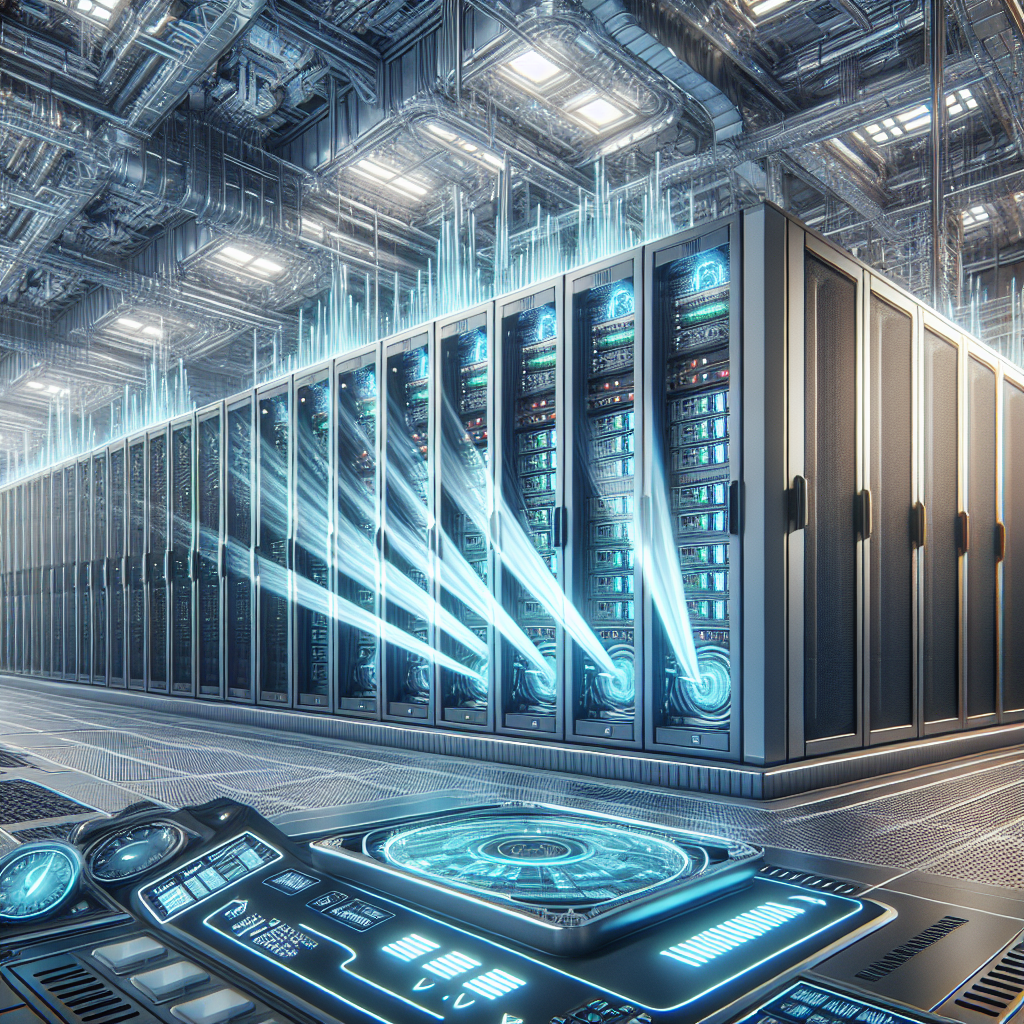
Top Considerations for Selecting a UPS for Your Data Center
When it comes to protecting your data center from power outages and ensuring uninterrupted operation, selecting the right uninterruptible power supply (UPS) is crucial. A UPS serves as a backup power source that kicks in when the main power supply fails, providing temporary power until a generator or alternative power source can take over. With so many options available on the market, here are the top considerations to keep in mind when selecting a UPS for your data center:1. Capacity and scalability: One of the first things to consider when selecting a UPS is the capacity it can provide. Determine the power requirements of your data center and choose a UPS that can handle the load. Additionally, consider the future growth of your data center and select a UPS that is scalable to accommodate increasing power needs.
2. Efficiency: UPS systems can vary in efficiency, which can impact energy costs and overall operating expenses. Look for UPS systems that are Energy Star certified or have high efficiency ratings to minimize energy consumption and reduce costs.
3. Battery backup time: The battery backup time of a UPS determines how long it can provide power to your data center in the event of a power outage. Consider the criticality of your data center operations and choose a UPS with sufficient battery backup time to ensure uninterrupted operation until power is restored.
4. Redundancy and reliability: Data centers rely on UPS systems to provide continuous power protection, so it is essential to select a UPS with built-in redundancy and reliability features. Look for UPS systems with hot-swappable batteries, dual power inputs, and automatic bypass capabilities to ensure seamless operation and minimize downtime.
5. Remote monitoring and management: Monitoring and managing UPS systems remotely can help prevent potential issues and ensure optimal performance. Look for UPS systems with remote monitoring capabilities, such as network connectivity and centralized management software, to easily monitor and control your UPS system from anywhere.
6. Maintenance and serviceability: Regular maintenance and service are essential to keep UPS systems in optimal condition and prevent failures. Consider UPS systems with easy access to components, user-friendly interfaces, and proactive maintenance features to simplify upkeep and ensure reliable operation.
7. Cost: Last but not least, consider the cost of the UPS system, including upfront purchase costs, installation fees, and ongoing maintenance expenses. While it may be tempting to opt for a lower-cost UPS system, it is crucial to balance cost with performance and reliability to ensure the long-term protection of your data center.
In conclusion, selecting the right UPS for your data center requires careful consideration of capacity, efficiency, battery backup time, redundancy, remote monitoring, maintenance, and cost. By evaluating these factors and choosing a UPS system that meets your specific requirements, you can ensure the uninterrupted operation of your data center and protect your critical IT infrastructure from power outages.
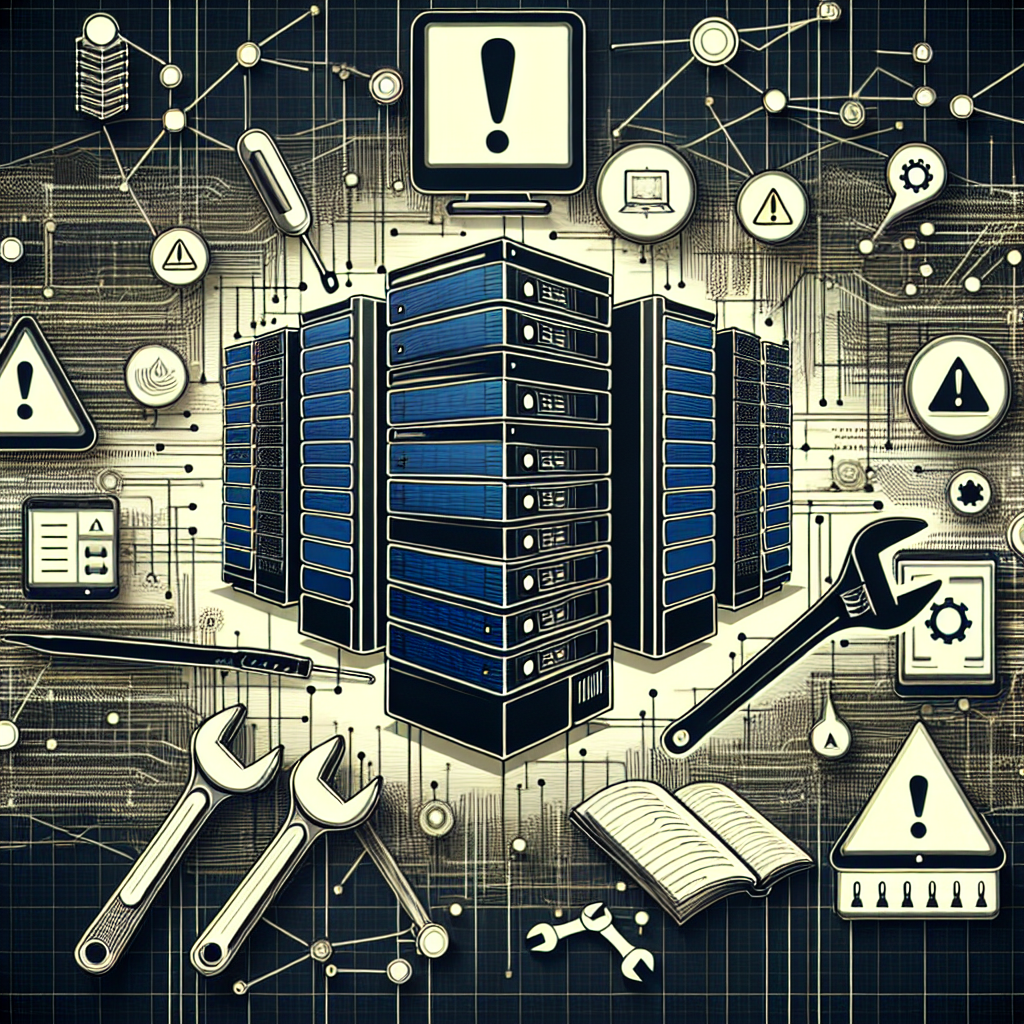
Top Challenges in Data Center Incident Management and How to Overcome Them
Data centers are the backbone of any organization’s IT infrastructure, housing critical hardware, software, and data that keep operations running smoothly. However, managing incidents in a data center can be a daunting task, as the sheer complexity and scale of these facilities pose unique challenges. In this article, we will discuss the top challenges in data center incident management and provide strategies to overcome them.1. Lack of visibility and monitoring: One of the biggest challenges in data center incident management is the lack of visibility and monitoring across the entire infrastructure. With so many interconnected systems and devices, it can be difficult to detect and respond to incidents in a timely manner. To overcome this challenge, organizations should invest in robust monitoring tools that provide real-time insights into the performance and health of their data center. Implementing a centralized dashboard that aggregates data from various sources can help IT teams quickly identify and address potential issues.
2. Scalability and complexity: Data centers are constantly evolving and expanding to meet the growing demands of an organization. This scalability and complexity make it challenging to manage incidents effectively, as new hardware, software, and configurations are added to the infrastructure. To address this challenge, organizations should establish clear incident management processes and procedures that can scale with the data center’s growth. Automated incident response tools can also help streamline the resolution process and reduce the burden on IT teams.
3. Resource constraints: Another common challenge in data center incident management is resource constraints, as IT teams are often stretched thin and may not have the necessary skills or expertise to handle complex incidents. To overcome this challenge, organizations should invest in training and development programs to upskill their IT staff and build a strong incident response team. Additionally, outsourcing certain incident management tasks to third-party providers can help alleviate the workload on internal teams and ensure incidents are resolved efficiently.
4. Communication and collaboration: Effective communication and collaboration are essential for successful incident management in a data center. However, siloed teams and lack of coordination can hinder the resolution process and lead to prolonged downtime. To overcome this challenge, organizations should establish clear communication channels and escalation procedures that enable IT teams to work together seamlessly during incidents. Implementing a centralized incident management platform can also facilitate collaboration and ensure all stakeholders are kept informed throughout the resolution process.
5. Compliance and regulatory requirements: Data centers are subject to strict compliance and regulatory requirements, which can pose challenges for incident management. Ensuring that incidents are handled in accordance with industry standards and regulations is essential to avoid penalties and legal consequences. To address this challenge, organizations should conduct regular audits and assessments to ensure their incident management processes align with compliance requirements. Implementing robust security measures and controls can also help mitigate the risk of incidents and ensure data center compliance.
In conclusion, data center incident management is a complex and challenging task that requires careful planning, coordination, and oversight. By addressing the top challenges outlined in this article and implementing effective strategies to overcome them, organizations can improve their incident response capabilities and ensure the uninterrupted operation of their data center. Investing in monitoring tools, scalability planning, resource development, communication protocols, and compliance measures can help organizations build a resilient and secure data center infrastructure that can withstand any incident.
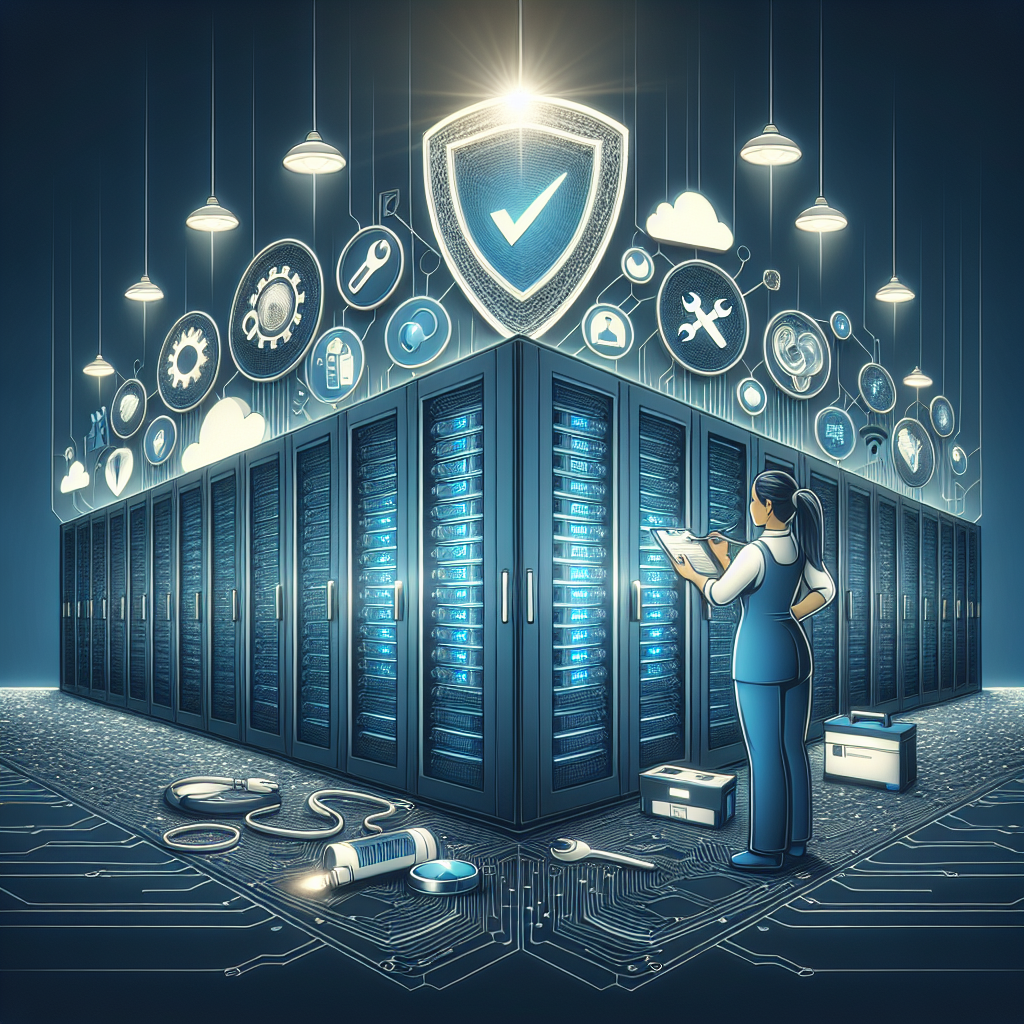
Top Tips for Effective Data Center Preventative Maintenance
Data centers are the backbone of modern businesses, housing critical IT infrastructure and data that are essential for operations. To ensure optimal performance and prevent costly downtime, it is crucial to implement a comprehensive preventative maintenance program for your data center. Here are some top tips for effective data center preventative maintenance:1. Regularly inspect and clean equipment: Dust and debris can accumulate on equipment and clog cooling systems, leading to overheating and potential failures. Schedule regular inspections and cleaning of equipment to ensure proper airflow and prevent issues.
2. Monitor environmental conditions: Data centers require specific environmental conditions to operate efficiently, including temperature and humidity control. Implement monitoring systems to track these conditions and address any deviations promptly to prevent equipment damage.
3. Update firmware and software: Regularly update firmware and software on all data center equipment to ensure security patches are applied and performance is optimized. Outdated software can leave vulnerabilities that hackers can exploit, leading to data breaches and disruptions.
4. Test backup systems: Data centers rely on backup systems to ensure data integrity and availability in the event of a failure. Regularly test backup systems to ensure they are working properly and can be relied upon in an emergency.
5. Conduct regular maintenance on UPS systems: Uninterruptible Power Supply (UPS) systems are critical for providing backup power in case of outages. Schedule regular maintenance and testing of UPS systems to ensure they are functioning correctly and can support the data center during a power failure.
6. Implement a predictive maintenance program: Predictive maintenance uses data analytics and monitoring systems to predict when equipment is likely to fail and schedule maintenance before a breakdown occurs. Implementing a predictive maintenance program can help prevent costly downtime and extend the lifespan of equipment.
7. Train staff on best practices: Ensure that data center staff are properly trained on best practices for equipment maintenance and safety protocols. Regular training sessions can help prevent human errors that can lead to equipment failures and downtime.
8. Document maintenance procedures: Keep detailed records of maintenance procedures, equipment configurations, and any issues encountered during maintenance. Documenting maintenance activities can help identify trends and patterns that can inform future maintenance schedules and prevent recurring issues.
By implementing a comprehensive preventative maintenance program for your data center, you can ensure optimal performance, reduce the risk of downtime, and prolong the lifespan of equipment. Regular inspections, monitoring, testing, and training are essential components of an effective maintenance program that can help keep your data center running smoothly and efficiently.
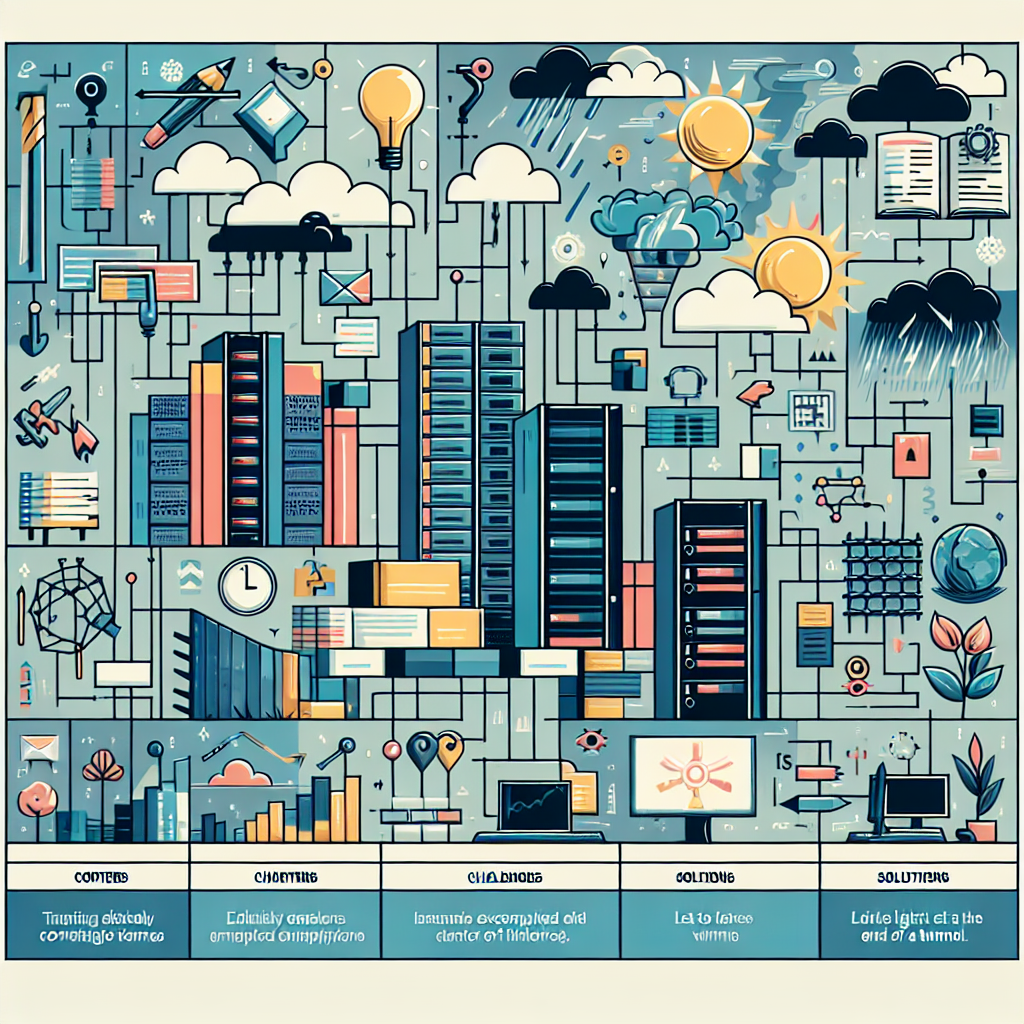
Top Challenges in Data Center Compliance and How to Overcome Them
Data centers play a crucial role in the modern digital landscape, serving as the backbone for storing, processing, and managing large amounts of data. With the rise of data breaches and privacy concerns, data center compliance has become more important than ever. However, ensuring compliance can be a daunting task, as data centers face numerous challenges in meeting regulatory requirements. In this article, we will explore the top challenges in data center compliance and provide strategies on how to overcome them.1. Regulatory Complexity: One of the biggest challenges in data center compliance is the ever-evolving landscape of regulations and standards. Data centers must comply with a myriad of regulations such as GDPR, HIPAA, and PCI DSS, each with its own set of requirements and guidelines. Keeping up with these regulations and ensuring compliance can be overwhelming for data center operators.
To overcome this challenge, data centers should invest in a robust compliance management system that can help streamline compliance efforts and ensure that all regulatory requirements are met. This system should include tools for tracking and monitoring compliance activities, as well as automated workflows to streamline compliance processes.
2. Data Security: Data centers store sensitive information, making them a prime target for cyber attacks. Ensuring data security is a critical aspect of compliance, as data breaches can result in severe financial and reputational damage. However, implementing strong security measures can be challenging, especially with the constant evolution of cyber threats.
To overcome this challenge, data centers should implement a multi-layered security approach that includes encryption, access controls, monitoring, and regular security audits. Additionally, data centers should invest in employee training to raise awareness about security best practices and ensure that all employees are well-equipped to handle potential security threats.
3. Data Sovereignty: Data sovereignty refers to the legal requirement that data is stored and processed within a specific jurisdiction. Many countries have strict data sovereignty laws that require data to be stored within the country’s borders, posing a challenge for data centers that operate globally.
To overcome this challenge, data centers should work closely with legal experts to understand the data sovereignty laws in each jurisdiction where they operate. Data centers can also consider implementing a hybrid cloud approach, where data is stored in multiple locations to ensure compliance with data sovereignty regulations.
4. Resource Constraints: Data centers often face resource constraints, such as budget limitations and staffing shortages, which can make compliance efforts more challenging. Compliance requires significant time, effort, and resources, which can strain data center operations.
To overcome this challenge, data centers should prioritize compliance efforts and allocate sufficient resources to ensure that compliance requirements are met. Data centers can also consider outsourcing certain compliance tasks to third-party providers, such as compliance consultants or managed service providers, to help alleviate resource constraints.
In conclusion, data center compliance is a complex and challenging task, but with the right strategies and tools, data centers can overcome these challenges and ensure that they are meeting regulatory requirements. By investing in compliance management systems, implementing strong security measures, understanding data sovereignty laws, and allocating resources effectively, data centers can navigate the compliance landscape successfully and protect their data and reputation.

Top DCIM Trends to Watch in 2021 and Beyond
Data center infrastructure management (DCIM) is a critical component of modern data center operations, providing essential tools for monitoring, managing, and optimizing data center resources. As technology continues to evolve, so too do the trends that shape the DCIM landscape. In 2021 and beyond, several key trends are expected to have a significant impact on the industry.1. Artificial Intelligence and Machine Learning: AI and ML technologies are becoming increasingly integrated into DCIM solutions, enabling more intelligent and automated decision-making processes. These technologies can help data center operators predict and prevent potential issues, optimize energy efficiency, and improve overall performance.
2. Edge Computing: With the rise of edge computing, data centers are becoming more distributed, leading to new challenges in managing and monitoring resources across multiple remote locations. DCIM solutions are evolving to support edge environments, providing real-time visibility and control over critical infrastructure.
3. Sustainability and Energy Efficiency: As concerns about climate change grow, data center operators are under increasing pressure to reduce their environmental impact. DCIM solutions are incorporating new features to help organizations track and optimize energy usage, reduce carbon emissions, and meet sustainability goals.
4. Modular and Containerized Data Centers: Modular and containerized data centers are gaining popularity due to their flexibility, scalability, and efficiency. DCIM solutions are adapting to support these new data center architectures, providing tools to monitor and manage resources in a more dynamic and agile environment.
5. Hybrid and Multi-Cloud Environments: Many organizations are adopting hybrid and multi-cloud strategies to leverage the benefits of both on-premises and cloud-based infrastructure. DCIM solutions are evolving to provide unified visibility and control across hybrid and multi-cloud environments, enabling seamless management of resources regardless of their location.
6. Data Security and Compliance: Data security and compliance are top priorities for data center operators, especially in light of increasing cyber threats and regulatory requirements. DCIM solutions are incorporating new features to enhance security, such as encryption, access controls, and audit trails, to help organizations protect their critical data and comply with industry regulations.
7. Remote Monitoring and Management: The COVID-19 pandemic has accelerated the adoption of remote monitoring and management capabilities in DCIM solutions. As more data center staff work remotely, these tools are essential for maintaining visibility and control over critical infrastructure, ensuring business continuity and operational efficiency.
In conclusion, the DCIM landscape is constantly evolving to meet the changing needs of data center operators in a rapidly advancing technological environment. By staying abreast of these top trends, organizations can leverage the latest innovations in DCIM to optimize their data center operations, improve efficiency, and drive business success in 2021 and beyond.

The Top Trends in Data Center Servicing for 2021 and Beyond
Data centers are an integral part of any organization’s IT infrastructure, serving as the backbone for storing, processing, and managing vast amounts of data. As technology continues to evolve at a rapid pace, data center servicing is also undergoing significant changes to meet the growing demands of businesses. In 2021 and beyond, several trends are shaping the future of data center servicing, providing organizations with new opportunities to enhance efficiency, scalability, and security.One of the top trends in data center servicing for 2021 and beyond is the increasing adoption of edge computing. Edge computing involves processing data closer to where it is generated, reducing latency and improving performance for critical applications. As more organizations deploy edge computing solutions, data centers are evolving to support these distributed architectures, requiring new approaches to networking, storage, and security.
Another key trend in data center servicing is the rise of artificial intelligence (AI) and machine learning (ML) technologies. AI and ML are being used to optimize data center operations, improve energy efficiency, and enhance security. By leveraging AI and ML algorithms, data center operators can automate routine tasks, predict potential issues before they occur, and optimize resource utilization, leading to cost savings and improved performance.
The increasing focus on sustainability is also driving changes in data center servicing. As organizations strive to reduce their carbon footprint and operate more efficiently, data centers are adopting green technologies such as renewable energy sources, energy-efficient cooling systems, and waste heat recovery solutions. By implementing sustainable practices, data centers can reduce their environmental impact and lower operating costs while meeting regulatory requirements and customer expectations.
Security remains a top priority for data center servicing, with cybersecurity threats becoming more sophisticated and pervasive. In response, data centers are implementing advanced security measures such as multi-factor authentication, encryption, and intrusion detection systems to protect sensitive data and ensure compliance with data protection regulations. Additionally, data centers are investing in security training for staff and conducting regular security audits to identify vulnerabilities and address potential risks proactively.
The ongoing digital transformation of businesses is also driving the need for more flexible and scalable data center solutions. As organizations embrace cloud computing, hybrid IT environments, and virtualization, data centers must adapt to support these diverse workloads and applications. This requires a shift towards software-defined infrastructure, automation, and orchestration tools that enable data center operators to quickly provision resources, scale capacity on-demand, and optimize performance based on workload requirements.
In conclusion, the top trends in data center servicing for 2021 and beyond reflect the evolving needs of organizations in an increasingly digital and data-driven world. By embracing edge computing, AI and ML technologies, sustainability practices, advanced security measures, and flexible infrastructure solutions, data centers can stay ahead of the curve and meet the demands of today’s dynamic business environment. As organizations continue to rely on data centers for their critical IT operations, staying abreast of these trends will be essential for ensuring optimal performance, reliability, and security in the years to come.
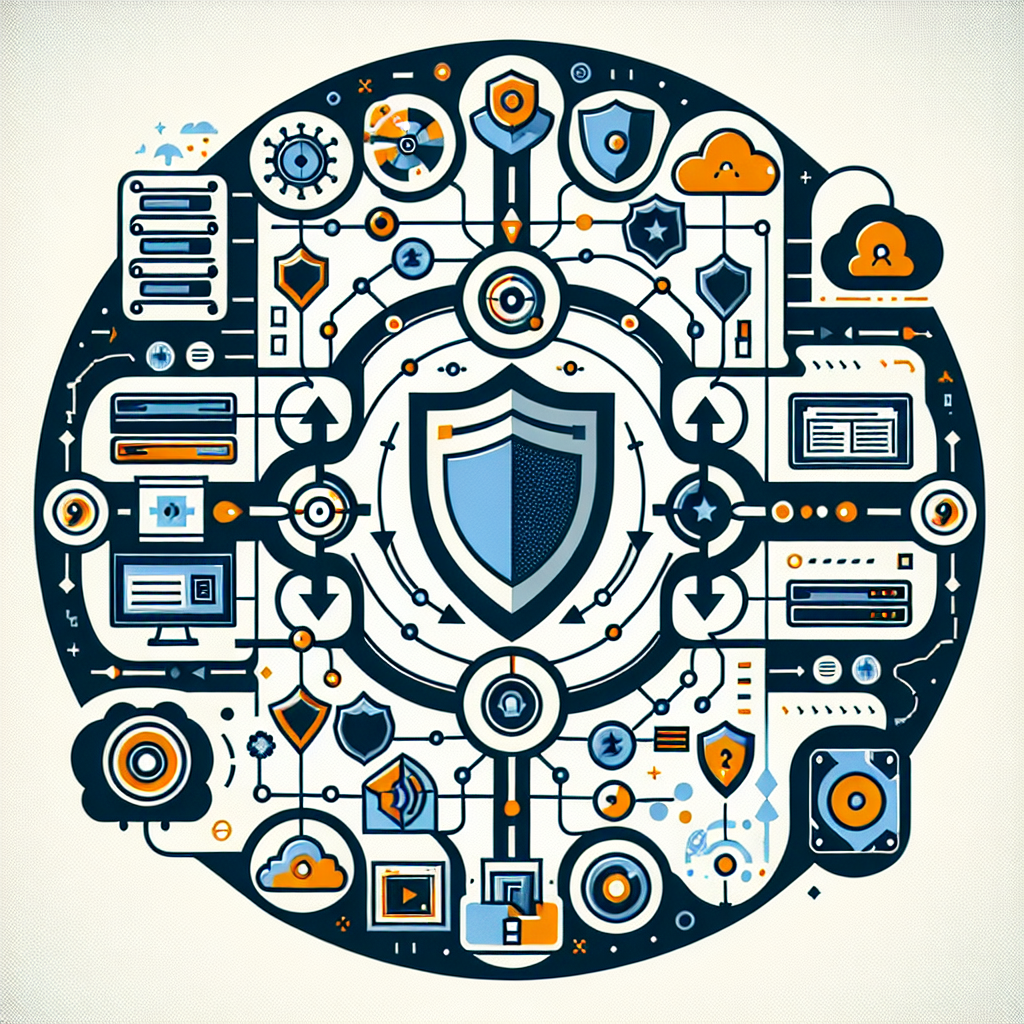
Top Trends in Data Center Backup and Recovery Technologies
Data centers are the heart of any organization, housing critical data and applications that are essential for daily operations. With the increasing volume and complexity of data, organizations are turning to advanced backup and recovery technologies to ensure data protection and business continuity. Here are the top trends in data center backup and recovery technologies that are shaping the future of data protection:1. Cloud-based Backup and Recovery: Cloud-based backup and recovery solutions are gaining popularity as organizations look to leverage the scalability and flexibility of the cloud. These solutions offer offsite data storage, fast recovery times, and cost-effective pricing models. Cloud-based backup and recovery also eliminates the need for on-premises hardware, reducing maintenance and management overhead.
2. Artificial Intelligence and Machine Learning: AI and machine learning technologies are being integrated into backup and recovery solutions to automate data protection processes and improve efficiency. These technologies can analyze data patterns, predict potential failures, and optimize backup schedules to ensure faster recovery times and increased data integrity.
3. Ransomware Protection: With the rise of ransomware attacks, organizations are investing in backup and recovery solutions that offer enhanced ransomware protection. These solutions include features such as immutable backups, ransomware detection algorithms, and instant recovery capabilities to minimize the impact of ransomware attacks on critical data.
4. Continuous Data Protection: Continuous data protection (CDP) solutions are becoming increasingly popular as organizations seek to reduce data loss and downtime. CDP solutions capture every change made to data in real-time, allowing for near-instant recovery of data to any point in time. This ensures minimal data loss and maximum uptime in the event of a data disaster.
5. Backup to Object Storage: Object storage is emerging as a preferred backup target for organizations looking to store large volumes of unstructured data. Object storage provides scalable and cost-effective storage options, making it an ideal choice for long-term data retention and disaster recovery purposes.
6. Hybrid Backup and Recovery: Hybrid backup and recovery solutions combine on-premises and cloud-based backup capabilities to provide organizations with a flexible and comprehensive data protection strategy. These solutions offer the benefits of both on-premises and cloud backup, allowing organizations to customize their backup and recovery processes based on their specific needs.
7. Data Deduplication and Compression: Data deduplication and compression technologies are essential for optimizing storage space and reducing backup windows. These technologies eliminate redundant data and compress data before it is stored, resulting in reduced storage costs and improved backup performance.
In conclusion, data center backup and recovery technologies are evolving rapidly to meet the growing demands of modern organizations. By leveraging cloud-based solutions, AI and machine learning, ransomware protection, continuous data protection, object storage, hybrid backup, and data deduplication technologies, organizations can ensure data protection, business continuity, and peace of mind in an increasingly data-driven world.

Top Tips for Conducting Effective Data Center Inspections and Maintenance
Data centers are the backbone of any organization’s IT infrastructure, housing critical equipment and data that are essential for business operations. To ensure that data centers are running efficiently and effectively, regular inspections and maintenance are crucial. Here are some top tips for conducting effective data center inspections and maintenance:1. Create a maintenance schedule: Establish a regular maintenance schedule for your data center, taking into account the specific needs of your equipment and the manufacturer’s recommendations. This schedule should include routine inspections, cleaning, and testing of equipment to prevent downtime and ensure optimal performance.
2. Conduct thorough inspections: During inspections, pay close attention to key components such as servers, cooling systems, power distribution units, and cabling. Look for signs of wear and tear, overheating, or other issues that could potentially lead to equipment failure. Address any issues promptly to prevent costly downtime.
3. Keep the data center clean: Dust and debris can accumulate in data center equipment, leading to overheating and reduced performance. Regularly clean and maintain the data center environment to prevent these issues. Use appropriate cleaning materials and techniques to avoid damaging sensitive equipment.
4. Monitor environmental conditions: Data centers require specific environmental conditions to operate efficiently, including temperature and humidity control. Use monitoring tools to track these conditions and make adjustments as needed to maintain optimal performance and prevent equipment damage.
5. Test backup systems: Data center downtime can have serious consequences for business operations. Regularly test backup power systems, cooling systems, and other critical equipment to ensure they are functioning properly in case of an emergency.
6. Document maintenance activities: Keep detailed records of all maintenance activities conducted in the data center, including inspection reports, maintenance schedules, and any repairs or replacements made. This documentation can help track the health of the data center and identify any recurring issues that need to be addressed.
7. Train staff: Ensure that data center staff are properly trained in conducting inspections and maintenance tasks. Provide ongoing training to keep staff up-to-date on best practices and new technologies in data center management.
By following these top tips for conducting effective data center inspections and maintenance, organizations can ensure that their data centers are operating at peak performance and minimize the risk of downtime. Regular maintenance and inspections are essential for keeping data center equipment running smoothly and preventing costly disruptions to business operations.

The Top Data Center Monitoring Tools for 2021
Data centers are the backbone of many organizations, providing the infrastructure needed to store and manage vast amounts of data. With the increasing complexity and scale of data centers, monitoring tools have become essential for ensuring the smooth operation and reliability of these facilities.In 2021, there are several top data center monitoring tools that stand out for their features, reliability, and ease of use. These tools help data center administrators keep track of key performance metrics, identify potential issues before they escalate, and optimize the efficiency of their data center operations.
One of the top data center monitoring tools for 2021 is SolarWinds Server & Application Monitor. SolarWinds is a trusted name in the IT industry, and their Server & Application Monitor offers comprehensive monitoring capabilities for servers, applications, and virtual machines. The tool provides real-time performance monitoring, alerting, and reporting features, making it easy for administrators to identify and resolve issues quickly.
Another popular data center monitoring tool is Paessler PRTG Network Monitor. PRTG Network Monitor offers a wide range of monitoring capabilities, including network, server, and application monitoring. The tool is known for its user-friendly interface and customizable dashboards, allowing administrators to easily monitor their data center infrastructure in real-time.
For organizations looking for a cloud-based monitoring solution, Datadog is a top choice. Datadog is a comprehensive monitoring platform that offers monitoring for cloud infrastructure, applications, and logs. The tool provides real-time metrics, alerts, and dashboards, making it easy for administrators to monitor their data center operations from anywhere.
Zabbix is another top data center monitoring tool that is known for its scalability and flexibility. Zabbix offers monitoring for servers, networks, and applications, with support for custom scripts and plugins. The tool also provides advanced alerting and reporting features, making it ideal for organizations with complex data center environments.
In conclusion, data center monitoring tools are essential for ensuring the reliability and efficiency of data center operations. In 2021, there are several top tools available that offer comprehensive monitoring capabilities, real-time metrics, and customizable dashboards. Whether you are looking for an on-premises solution or a cloud-based platform, there is a data center monitoring tool that will meet your organization’s needs.
